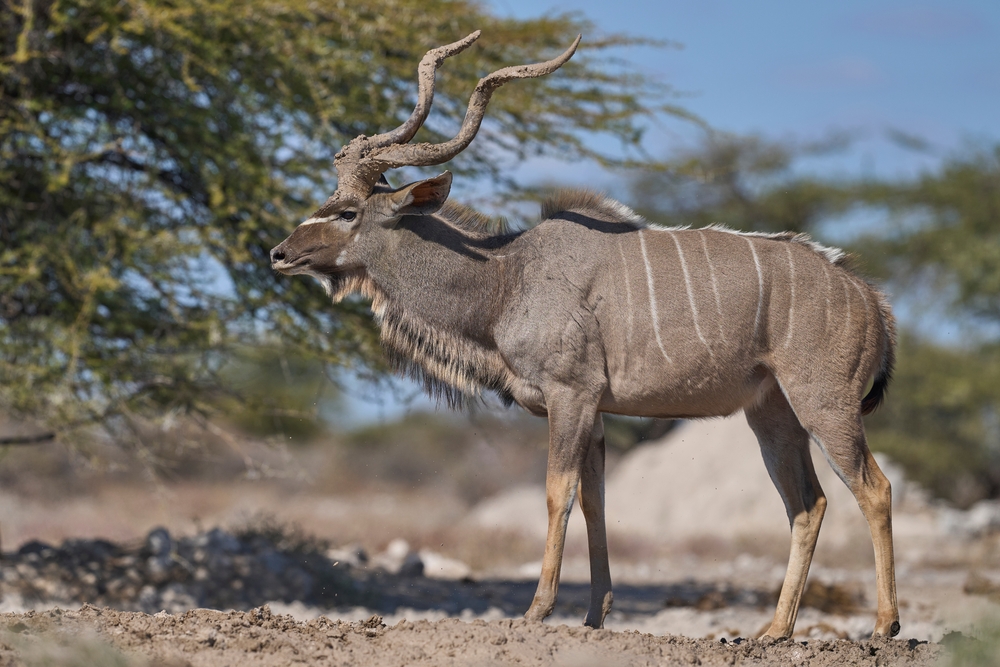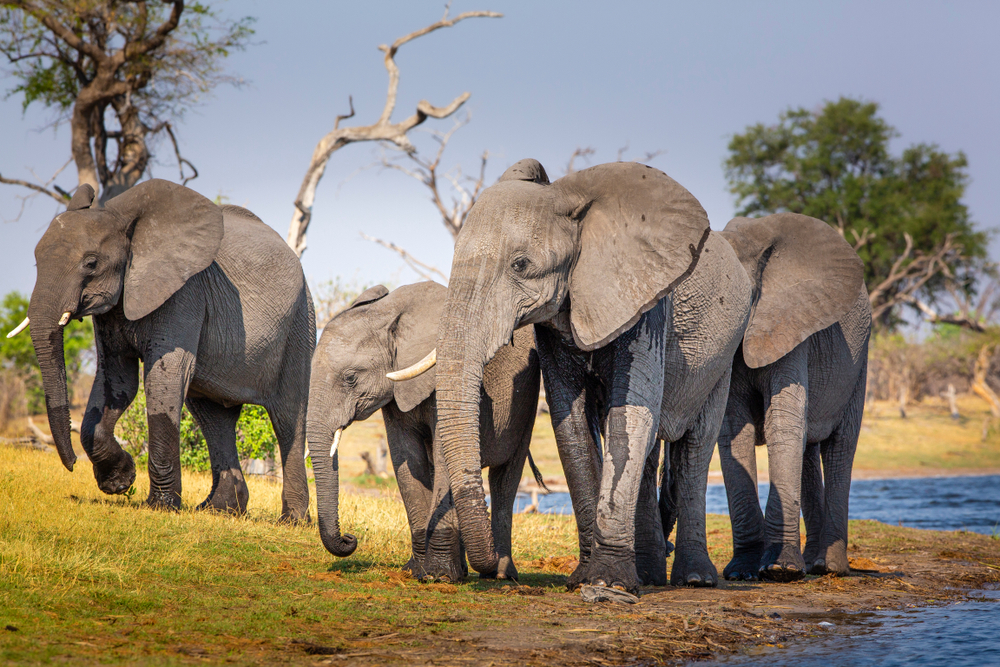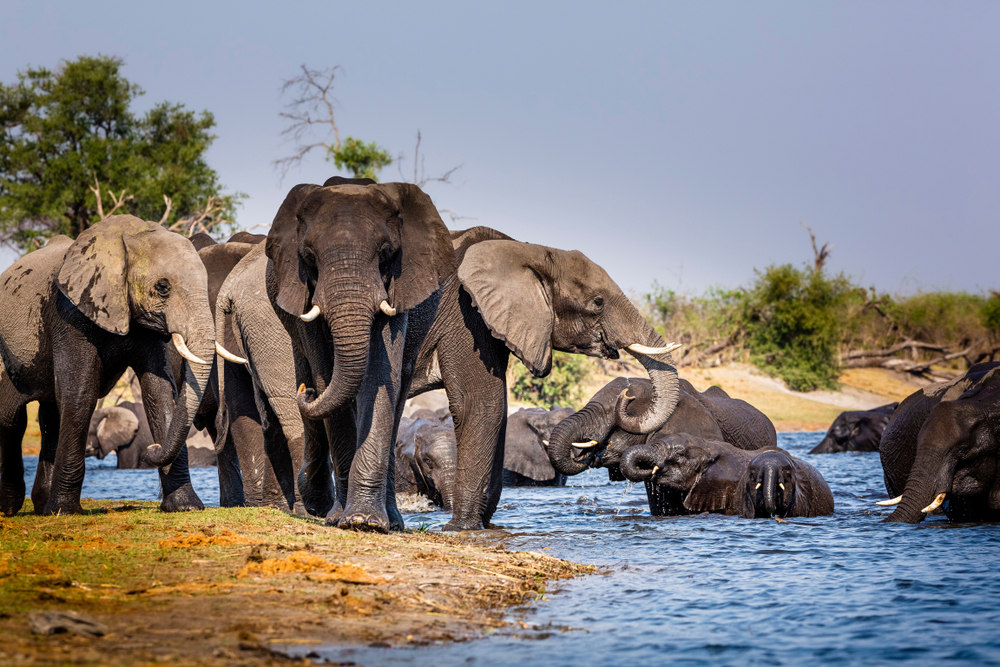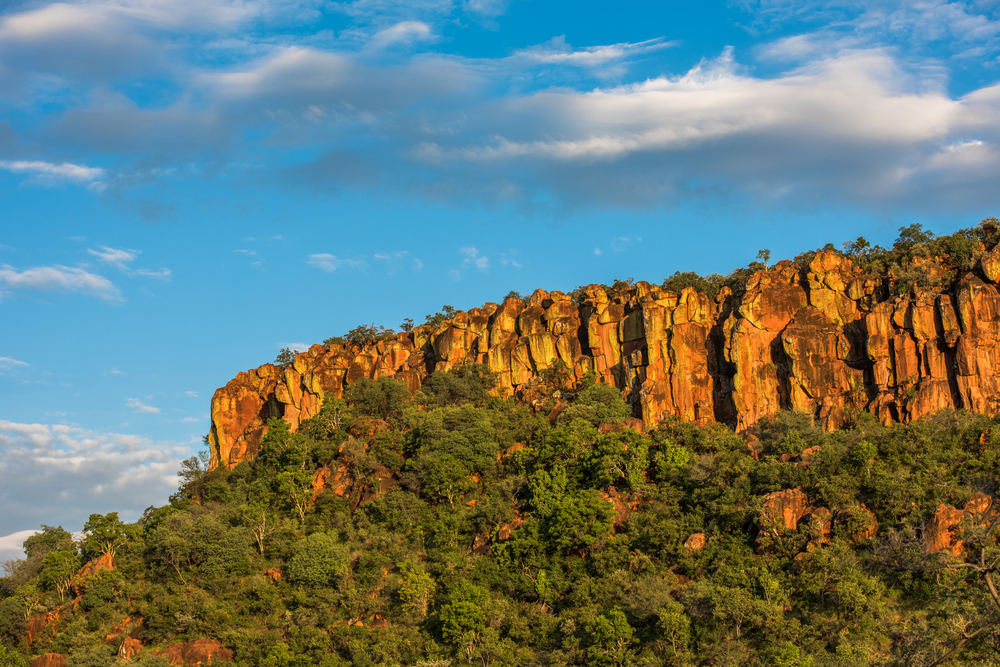Mangetti Overview
Mangetti National Park, located in Namibia’s northern Kavango East region, is a lesser-known but ecologically significant protected area. Covering approximately 420 square kilometers (162 square miles), the park was established in 2008 to protect its unique savanna and woodland ecosystems. Known locally as “Mangetti Nasionale Park”, this park serves as a vital refuge for Namibia’s wildlife and a key area for conservation efforts in the region.
The terrain of Mangetti National Park is a mix of open grasslands, dense woodlands, and sandy soils characteristic of the Kalahari Basin. The park is covered predominantly by acacia and broad-leafed tree species, such as terminalia and Burkea africana, which thrive in the semi-arid climate. Seasonal pans and small waterholes dot the landscape, providing essential water sources for the park’s wildlife. This varied terrain creates a mosaic of habitats, supporting diverse flora and fauna.
Mangetti National Park is home to a variety of wildlife, with several species adapted to its dry conditions. Among its most notable inhabitants are elephants, which migrate through the park, as well as giraffes, kudu, and eland. Carnivores such as leopards and hyenas are also present, though sightings are less frequent. The park is an important refuge for rare and endangered species, including roan and sable antelopes. Birdlife is abundant, with species like lilac-breasted rollers, kori bustards, and various raptors commonly observed.
Visitors to Mangetti National Park can experience its natural beauty through guided game drives and walking safaris, which provide opportunities to observe wildlife in their natural habitats. Birdwatching is a popular activity, particularly during the dry season when birds gather around waterholes. The park also offers cultural experiences, with opportunities to engage with local communities and learn about their traditional practices and connection to the environment.
Despite its ecological importance, Mangetti National Park faces significant conservation challenges. Habitat degradation from overgrazing and human-wildlife conflict poses threats to its ecosystems. Limited infrastructure and accessibility have also restricted the park’s potential as a tourist destination. However, conservation efforts led by Namibia’s Ministry of Environment, Forestry and Tourism, in collaboration with local and international organizations, aim to address these challenges. Initiatives focus on anti-poaching measures, habitat restoration, and community engagement to promote sustainable resource use and enhance the park’s ecological health.
Mangetti National Park is a testament to Namibia’s commitment to protecting its natural heritage. While relatively small and less visited than some of the country’s other parks, it plays a crucial role in conserving biodiversity and supporting endangered species. With continued conservation efforts and sustainable tourism development, Mangetti has the potential to become a key destination for eco-tourists and a vital component of Namibia’s protected areas network.
















































































